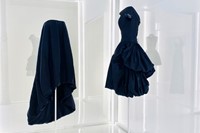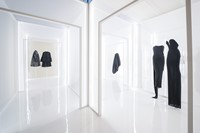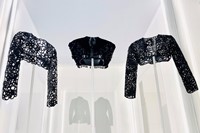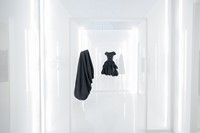As a new exhibition places their designs in conversation, prolific fashion curator Olivier Saillard explains Cristóbal Balenciaga’s profound influence on Azzedine Alaïa, who became a lifelong collector of the Spanish couturier’s work
In 1968, as Cristóbal Balenciaga was preparing to close his eponymous fashion house, a young Azzedine Alaïa – already designing for private clients from his small apartment on rue de Bellechasse – received a phone call from Mademoiselle Renée, Balenciaga’s then-vice general director. She was concerned about the future of the Spanish couturier’s archive of gowns and unused fabrics and invited Alaïa to the maison to help himself to what was left, hoping he might re-cut and re-purpose the garments and cloth to give them new life. “That’s how his obsession for collecting fashion began,” says prolific fashion curator and historian Olivier Saillard. “He was so moved seeing all those pieces that, instead of reworking them, he decided to keep them intact.”
Saillard – who works closely with Carla Sozzani and Alaïa’s partner, the painter Christoph von Weyhe, to manage the late designer’s foundation, Association Azzedine Alaïa – has curated a new exhibition Alaïa et Balenciaga, Sculpteurs de la Forme (Alaïa and Balenciaga, Sculptors of Shape) which runs until June 28 at Galerie Azzedine Alaïa in Paris. Conceived as a sort of pristine white labyrinth, the exhibition sees pieces from both designers mirror one another without ever getting too physically close, reflecting the fact that the two couturiers never met in person. And, though Saillard might have been behind the exhibition’s content and design, he is quick to insist that the exhibition was not his own idea – rather that of another famed Parisian couturier, Hubert de Givenchy.
“It was all Hubert de Givenchy’s idea,” explains Saillard. “He came to see us in 2018, approximately six months after Azzedine’s death and, at 90 years old, completely blew us away with his old-school charm. He wanted to show the work of both designers at the Cristóbal Balenciaga Museum in the Spanish city of Getaria,” says Saillard. “Unfortunately, he died two weeks after that first meeting.” Saillard then became in charge of fostering Givenchy’s nascent idea, and the exhibition will eventually make its way to Getaria this summer.
Identifying all the Balenciaga pieces in Alaïa’s collection was no easy feat. “Nothing was really archived, but we ended up finding more than 500 items,” remembers Saillard. “Then we compared them to Azzedine’s own work. That’s when I realised the extent of the Spanish master’s influence on him. Most of all, I think Azzedine always strived to equal Cristóbal’s technical virtuosity.” Did he succeed? “Well, there are very few 20th-century designers that mastered every step of the creative process, from drawing to cutting, sewing and assembling a garment, and they both did it. So yes.”
But there’s more that links both designers than just technique and savoir-faire. For one thing, they both loved the sobriety of black above all other colours. “Black demands an impeccable cut, because in a black garment nothing can be masked with ornament,” says Saillard. Both designers were also fascinated by the rigour of military clothing and as comfortable with the tailleur as the flou, always exploring volume in the process – “although Alaïa famously favoured body-con shapes while Balenciaga always separated the fabric from the skin,” notes Saillard.
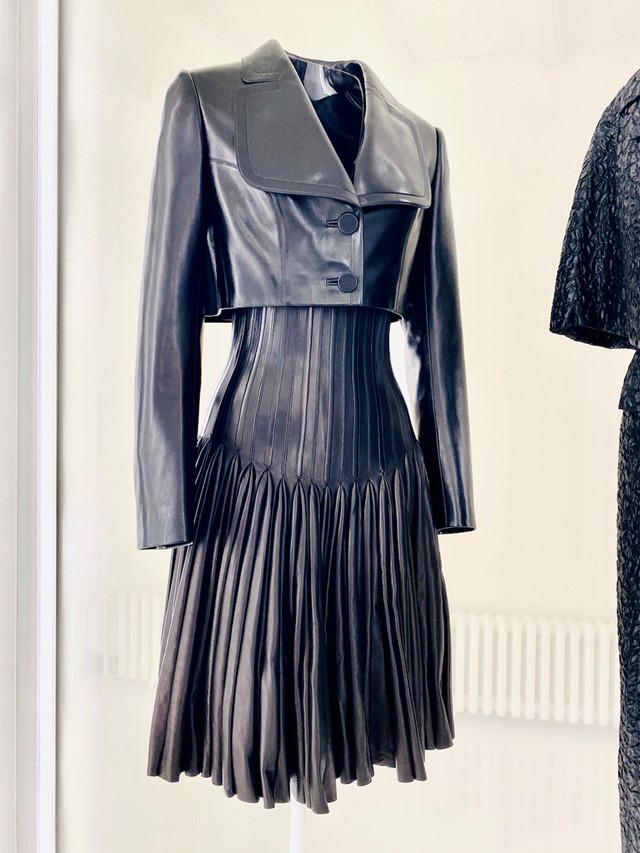
Perhaps most importantly, neither Balenciaga nor Alaïa ever succumbed to the traditional fashion calendar or to media pressure; they rarely gave interviews, led discreet lives and weren’t afraid to keep their work outside of the fashion system. “They even rejected clients,” says Saillard. “I think they respected their work too much to bow to the passing whims of the industry – much to their advantage. At the end of the day, that’s what makes them truly timeless.”
That concept of timelessness is particularly poignant at a time when fashion is defined by ultra seasonal drops and near-weekly passing trends, though there is a feeling that this might be starting to wane. Which is why Demna Gvasalia’s announcement last month that that he would re-open Balenciaga’s couture atelier – showing a first collection next July – was a welcome surprise. To Saillard, that couldn’t be more exciting. “Demna has in his hands a veritable treasure trove in Balenciaga, filled with gems. I hope he’ll make the most of them. I think it’s going to be challenging: it’s not easy to put an atelier together from scratch in 2020,” he says. “But I also think he’s going to put a lot of today’s idea of what haute couture is out of fashion. In any case, after years of style-over-substance design, I think we’re all ready to start seeing more substance on the catwalks again.”
Alaïa et Balenciaga, Sculpteurs de la Forme, runs until June 28, 2020 at Galerie Azzedine Alaïa, 18 rue de la Verrerie, Paris.



